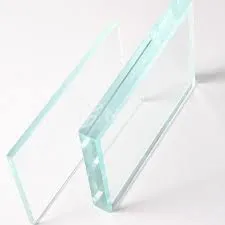Understanding Architectural Glass Types An Essential Component of Modern Design
Architectural glass is a critical component in contemporary building design, serving both functional and aesthetic purposes. With advancements in technology and design innovation, a diverse range of glass types is available, each with unique properties and applications. This article explores various architectural glass types, their characteristics, and their roles in modern architecture.
1. Clear Glass
Clear glass is the most commonly used type of glass in architecture. It provides excellent visibility and illumination, making it ideal for windows, facades, and curtain walls. This type of glass is made from silica sand, soda ash, and limestone, which are heated to form molten glass. Clear glass allows for maximum light transmission, connecting indoor spaces with the outdoors.
2. Tinted Glass
Tinted glass is produced by adding metal oxides during the manufacturing process, resulting in glass that can reduce glare and heat gain. Available in various colors, tinted glass is often used in commercial buildings to minimize solar heat gain and improve energy efficiency. Aside from its functional benefits, tinted glass can also enhance the building's aesthetic appeal and provide privacy.
3. Low-E Glass
Low-emissivity (Low-E) glass is specially treated to reflect heat and control the amount of ultraviolet (UV) light that enters a building. This type of glass features a thin metallic coating that allows natural light to pass while reducing heat transfer. Low-E glass is particularly beneficial in climates with significant temperature fluctuations, helping to maintain indoor comfort levels and reduce energy costs.
4. Laminated Glass
Laminated glass consists of two or more layers of glass bonded together with an interlayer, usually made of polyvinyl butyral (PVB). This type of glass is known for its safety features, as it holds together when shattered, making it ideal for applications where security is a concern, such as skylights, glass floors, and facades. Additionally, laminated glass can provide enhanced acoustic insulation, making it suitable for urban environments.
architectural glass types
5. Tempered Glass
Tempered glass is manufactured through a process of extreme heating and rapid cooling, making it stronger than regular glass. This type of glass is highly resistant to impact, thermal stress, and is commonly used in high-traffic areas, such as shower doors, glass railings, and facades. If broken, tempered glass shatters into small, blunt pieces, reducing the risk of injury, which enhances safety in architectural applications.
6. Insulated Glass
Insulated glass units (IGUs) consist of two or more panes of glass separated by a sealed airspace, creating a barrier against heat transfer, noise, and condensation. This type of glass is vital for energy-efficient buildings, as it improves insulation performance compared to single-pane glass. Insulated glass is often used in residential and commercial buildings, providing comfort and energy savings.
7. Curved Glass
Curved glass is manufactured through special techniques and is used for architectural features that require a specific shape. Ideal for modern structures with unique forms, curved glass can create stunning visual effects while maintaining structural integrity. This type of glass is often employed in canopies, atriums, and innovative facades, allowing architects to push the boundaries of conventional design.
8. Smart Glass
Smart glass, also known as switchable glass, can change its properties in response to external stimuli such as heat, light, or electricity. This innovative glass type can reduce glare and enhance privacy while allowing natural light to enter a space. Smart glass technologies include electrochromic, thermochromic, and photochromic options, opening new avenues for sustainable and responsive building design.
Conclusion
Architectural glass types play a crucial role in shaping modern architecture, influencing building aesthetics, functionality, and energy efficiency. Whether through clear, tinted, or advanced smart glass solutions, each type offers architects and builders a unique set of advantages tailored to specific design requirements. As technology continues to evolve, the potential for new glass types and functions will expand, driving innovation in the built environment and enhancing both the beauty and sustainability of architectural structures. Understanding these glass types is essential for anyone involved in construction, design, or architecture, providing the foundation for creating functional and visually stunning spaces.
 Afrikaans
Afrikaans  Albanian
Albanian  Amharic
Amharic  Arabic
Arabic  Armenian
Armenian  Azerbaijani
Azerbaijani  Basque
Basque  Belarusian
Belarusian  Bengali
Bengali  Bosnian
Bosnian  Bulgarian
Bulgarian  Catalan
Catalan  Cebuano
Cebuano  Corsican
Corsican  Croatian
Croatian  Czech
Czech  Danish
Danish  Dutch
Dutch  English
English  Esperanto
Esperanto  Estonian
Estonian  Finnish
Finnish  French
French  Frisian
Frisian  Galician
Galician  Georgian
Georgian  German
German  Greek
Greek  Gujarati
Gujarati  Haitian Creole
Haitian Creole  hausa
hausa  hawaiian
hawaiian  Hebrew
Hebrew  Hindi
Hindi  Miao
Miao  Hungarian
Hungarian  Icelandic
Icelandic  igbo
igbo  Indonesian
Indonesian  irish
irish  Italian
Italian  Japanese
Japanese  Javanese
Javanese  Kannada
Kannada  kazakh
kazakh  Khmer
Khmer  Rwandese
Rwandese  Korean
Korean  Kurdish
Kurdish  Kyrgyz
Kyrgyz  Lao
Lao  Latin
Latin  Latvian
Latvian  Lithuanian
Lithuanian  Luxembourgish
Luxembourgish  Macedonian
Macedonian  Malgashi
Malgashi  Malay
Malay  Malayalam
Malayalam  Maltese
Maltese  Maori
Maori  Marathi
Marathi  Mongolian
Mongolian  Myanmar
Myanmar  Nepali
Nepali  Norwegian
Norwegian  Norwegian
Norwegian  Occitan
Occitan  Pashto
Pashto  Persian
Persian  Polish
Polish  Portuguese
Portuguese  Punjabi
Punjabi  Romanian
Romanian  Russian
Russian  Samoan
Samoan  Scottish Gaelic
Scottish Gaelic  Serbian
Serbian  Sesotho
Sesotho  Shona
Shona  Sindhi
Sindhi  Sinhala
Sinhala  Slovak
Slovak  Slovenian
Slovenian  Somali
Somali  Spanish
Spanish  Sundanese
Sundanese  Swahili
Swahili  Swedish
Swedish  Tagalog
Tagalog  Tajik
Tajik  Tamil
Tamil  Tatar
Tatar  Telugu
Telugu  Thai
Thai  Turkish
Turkish  Turkmen
Turkmen  Ukrainian
Ukrainian  Urdu
Urdu  Uighur
Uighur  Uzbek
Uzbek  Vietnamese
Vietnamese  Welsh
Welsh  Bantu
Bantu  Yiddish
Yiddish  Yoruba
Yoruba  Zulu
Zulu 

